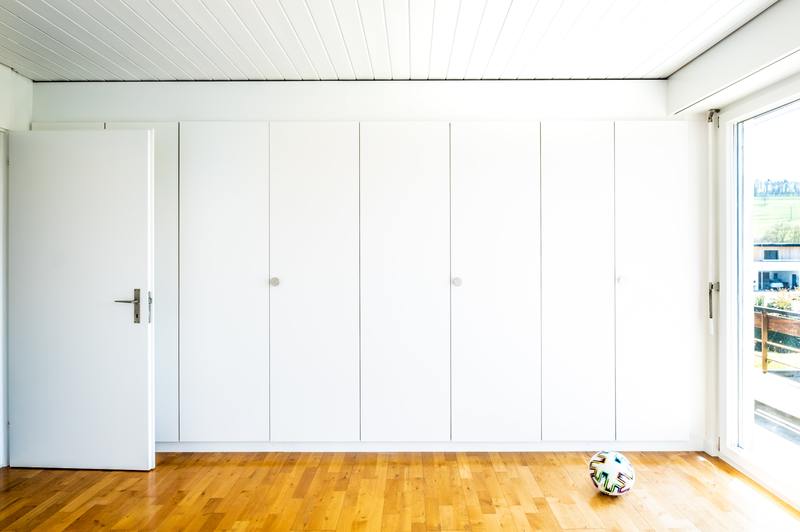It is genuinely confusing for many people what causes mold in a closet. It always seems to appear out of nowhere and immediately comes back days after wiping it.
Mold spreads quickly and easily, and it can also damage the quality of the fabric and leather. It would not be best to leave them growing on closets because it can harm your most prized possessions.

Some of the possible blemishes would even be irreversible. If you have the same issue, stick around to find out its causes and what you can do to prevent mold from growing again.
Is Mold In Closet Dangerous?
Molds have different types and kinds, and most of them are harmful to humans. Some excrete toxins that can cause skin, eye, and throat irritations. The spores can also travel in the air, making them easy to ingest and cause internal complications.
Molds can also destroy fabrics because they feed on any material they are growing on. Contaminated objects must be cleaned separately from unaffected items to prevent further contamination.
Black mold is the most common species to grow inside homes, and it is also one of the dangerous kinds. You should find out how to identify black mold to determine the necessary actions to prevent it from spreading further.
Is Mold In Closets Common?
Molds on closets are not brand-new news, but they accumulate less commonly than on bathrooms and kitchens. However, if you often hang wet clothes in the closet, it creates a higher risk of mold growth.
Stale air can also contribute to the spread of spores. The pollutants and the unpleasant smells can last for more extended periods in a specific area, and it can be very unhealthy for the people living within the house.
This contamination can cause fever symptoms, headaches, allergic reactions, and trouble sleeping in some cases. It is not recommended to leave the mold growth unaddressed, so be sure to find ways on how to get rid of it immediately right after noticing.
What Causes Mold Growth In A Closet?
You may notice that there are different colors and shades. They also have different textures and consistencies depending on the type of surface they are growing on.
Some may appear velvety or slimy and grow in spots or colonies. If they start growing on your closets, you may refer to these possible factors and determine the source of your problem.
1. Moldy fabric
Most fabrics, such as cotton, provide a rich place for molds to feed on and grow. They are also innately absorbent, and the moisture can remain on the surface for a long time if you put it in the closet without drying completely.
If you have moldy clothes, the spores can spread to the closet and on the walls, carpet, and other locations around the house. Avoid hanging damp garments and fabrics in the closet. Be sure that they are completely dry first to prevent this from happening.
2. Humidity
Mold thrives where there is high humidity. When the closet is located behind an exterior wall, it is more likely to absorb excess water vapor and moisture accumulated in the gaps. You can prevent this by allowing the air to circulate inside the closet by opening the room’s windows and doors.
3. Water damage
Water damage is another source of moisture that can trigger mold growth. Nearby leaks from walls and ceiling can reach the closet, so you should solve that problem as soon as possible. The leading cause of water damage is usually plumbing problems, so be sure to get your pipes checked because they might be a larger mold colony hiding behind the walls.
4. Attic mold
Mold spreads rapidly, so if you cannot find its source, its origin might be in a whole different location. It can seep through tight spaces and affect nearby surfaces.
When the mold makes its way through the closets, it will remain there and possibly affect your clothes, shoes, and leather bags. You can look at this article on how to remove mold from leather bags to save your valuable items.
To find the source, you should look out for dark patches on the walls and ceiling. You can check that and look for existing mold roots if you can access the other side of the dark patches, like the attic.
How To Prevent Mold In Closets
There are various things that you can try to prevent molds from growing inside your closets. Mold growth can be a huge issue, especially if you don’t do anything with it. After all, no one wants mold contamination on their clothes and other expensive possessions.
Here are several ways that will help you minimize the risk of mold growth. Make your closet mold-free by trying any of these techniques!
- Dry your clothes completely
- Clean the shelves once every month
- Use a humidity controller
- Use an air purifier
- Consider changing wood shelving to wire shelving
- Do a leak check regularly on nearby plumbing
- Don’t ignore musty smells
- Use silica packs
- Use elevated doors to administer airflow
Conclusion
Now that you finally know what causes mold in a closet, you won’t be surprised anymore if it suddenly appears. It is hard to prevent, especially in places where the high humidity is consistent. You can do the following techniques written above to prevent mold from contaminating your closet shelves.
